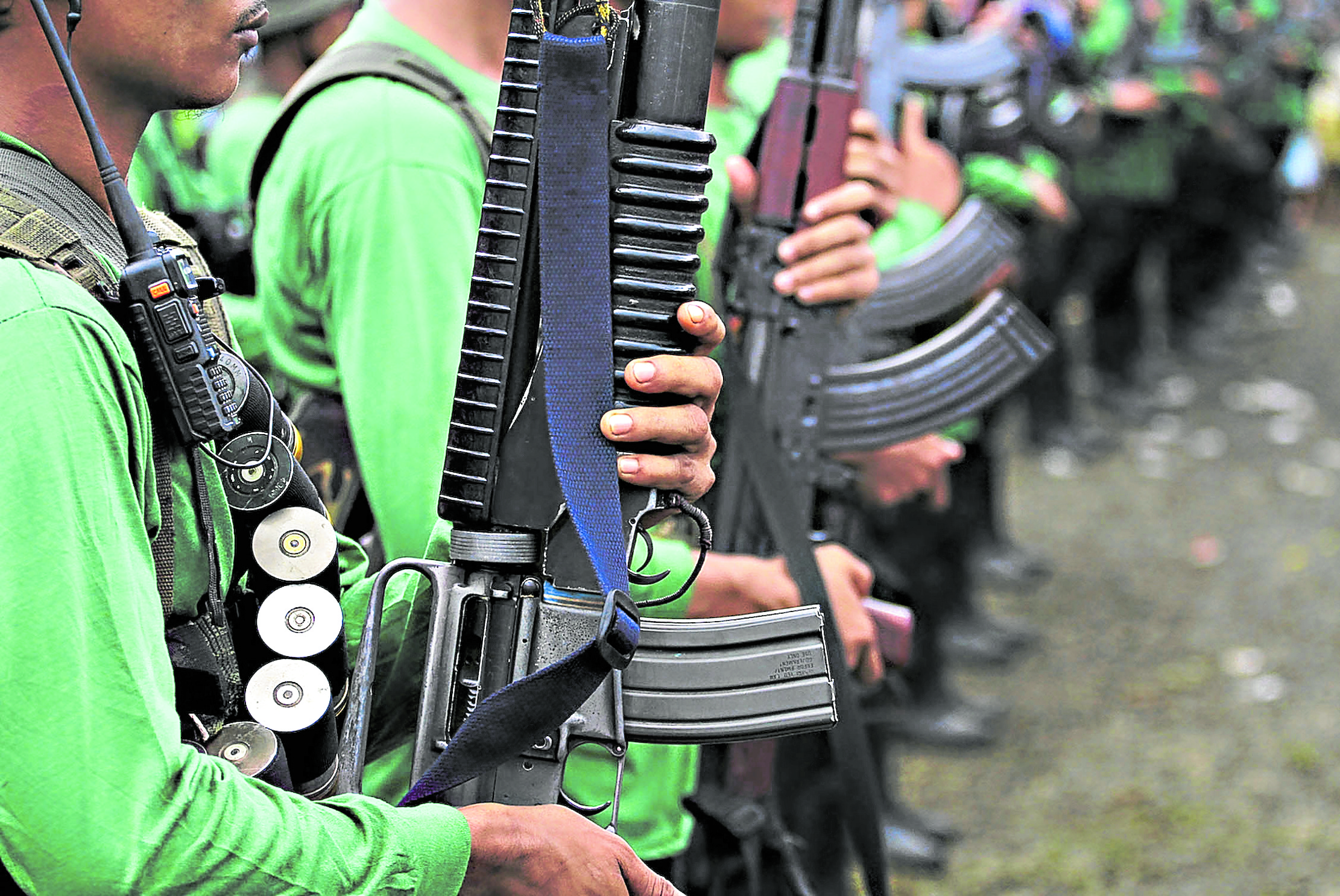
LAST REMNANTS? According to National Security Adviser Eduardo Año, the expanded amnesty program will be targeting the “remaining” active members of the New People’s Army, which he said are down to 1,576. —ERWIN MASCARIÑAS
President Ferdinand Marcos Jr. has ordered the expansion of the government’s amnesty program to include around 1,500 communist rebels who have yet to lay down their arms and return to the fold of the law.
The President gave the directive during an executive meeting of the National Task Force to End Local Communist Armed Conflict (NTF-Elcac) on Thursday afternoon in Malacañang.
READ: Marcos wants to carry out amnesty for communist rebels at once, says Año
“The President has directed the immediate implementation of the amnesty program for the remaining members of the Communist Party of the Philippines, New People’s Army and National Democratic Front since Congress has already concurred with the proclamation,” National Security Adviser Eduardo Año said in a Palace press briefing.
Año was referring to Proclamation No. 404 issued by Marcos last year, which granted amnesty to former communist rebels who already surrendered their arms.
According to the presidential adviser on the peace process, Carlito Galvez Jr., Proclamation No. 404 only covered around 40,000 ex-rebels who already surrendered to the government.
The expanded coverage ordered by the President for the remaining 1,576 rebels will be contained in another proclamation once the government and the communist insurgents conclude their peace talks.
‘You know how Filipinos are’
“It will be a separate proclamation. The proclamation we have now is only for the 40,000 who surrendered. Just in case we already have a final peace agreement, that’s when we will have a new proclamation,” Galvez told reporters in an interview after the press briefing.
In November last year, the government and the National Democratic Front of the Philippines agreed to pursue a “principled and peaceful resolution” to the decades-old leftist insurgency and address its root causes.
READ: IRR for gov’t amnesty to ex-rebels out before end-March
Galvez explained that amnesty was usually granted to rebels after the conclusion of the peace negotiations.
The government expects an initial 1,500 communist rebels to apply and benefit from the expanded amnesty once Malacañang has formalized the offer.
“That’s just the initial applicants. You know how Filipinos are. They will first see if it’s a good deal for them. Once they realize that it will become favorable to them, many will apply,” Galvez said.
Barangay funding
Asked if the President’s order to immediately implement the amnesty for remaining communist rebels was an expansion of his earlier amnesty directive, Galvez said: “Yes, it might be, but definitely the coverage for the meantime is those who surrendered and went back to the folds of the law.”
According to Año, there are still 1,576 active NPA rebels and 1,406 loose firearms in their arsenal.
Also during Thursday’s NTF-Elcac meeting, the President directed the Cabinet to increase the financial support to 846 barangays under the Barangay Development Program (BDP) for this year.
Under the BDP, an initiative to spur development in communities once ridden with armed conflict, around P2.6 billion was earlier allotted for such villages—or P2.5 million each.
“The President said the P2.5 million per barangay is small. He said, ‘We have to do more. We have to do better than that. We will try to reach P10 million per barangay,’” Año said.
Marcos, he said, asked the Department of Budget and Management and the Department of the Interior and Local Government to “crunch the numbers” so that an increase in the BDP funding would enable the 846 barangays to have more farm-to-market roads and improved water and sanitation systems.
The NTF-Elcac was also ordered to “propose specific programs and projects for continuous implementation of projects for the 5,430 barangays that have been part of the BDP program since its inception.”